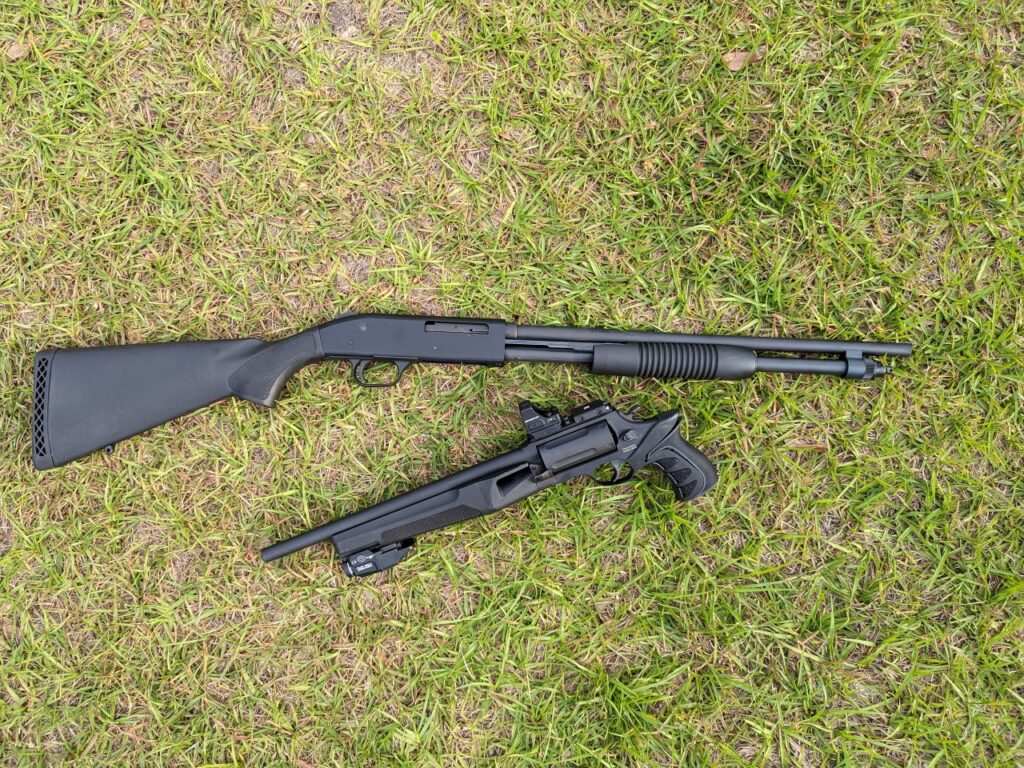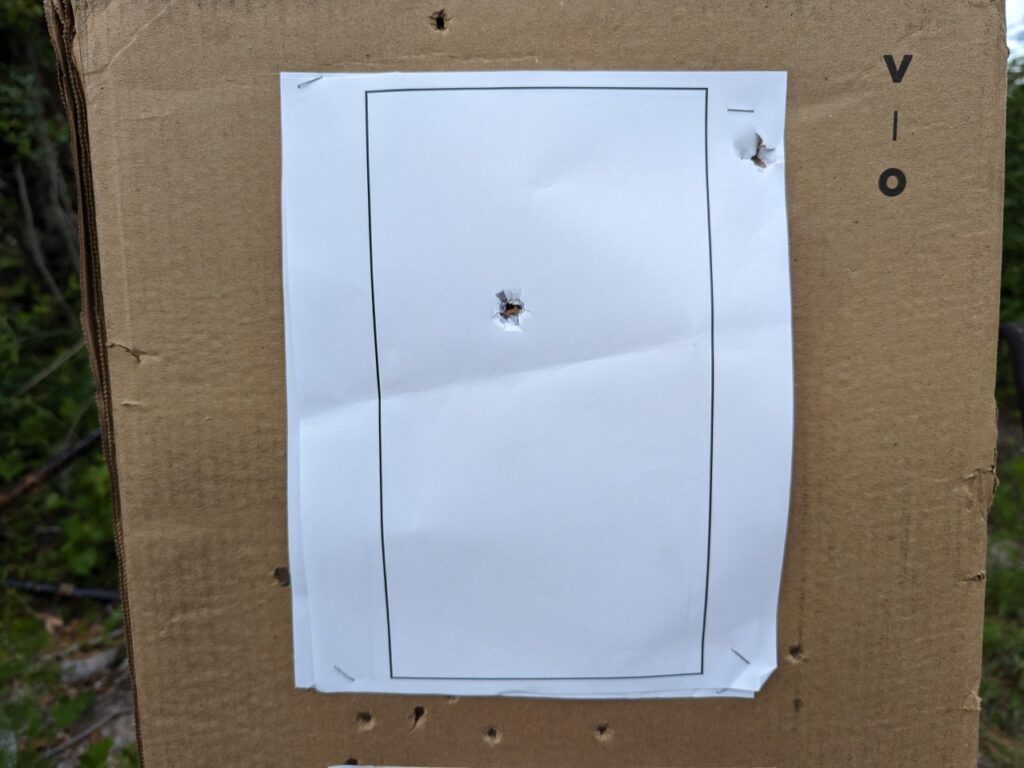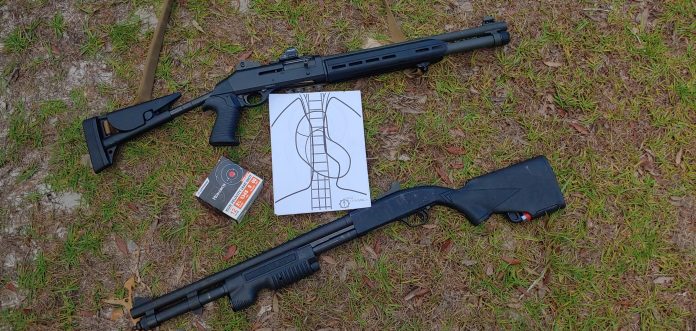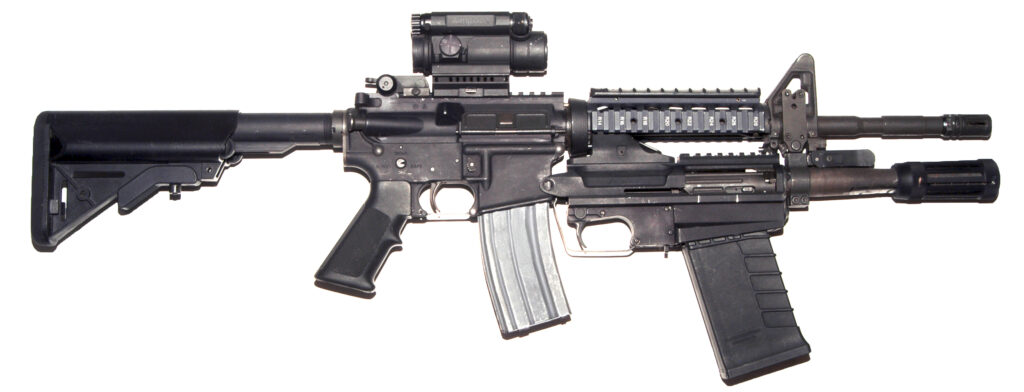I recently wrote a two-part article on the Judge Home Defender patterns and whether it’s acceptable to use with buckshot. The original Judge and even the 6-inch version were lacking when it came to proper patterns for buckshot. I never liked the Judge, but I was willing to try the Home Defender. A reader pointed out that I should test the Home Defender against a smoothbore .410 shotgun, so I did just that with a load of .410 buckshot to see which was better.
.410 Buckshot Testing Parameters
Mossberg recently expanded the 590 series to include both 20 gauge and .410 bore guns. Mossberg happily sent me one of the .410 variants, and with its short barrel and cylinder choke, I figured it would work well as a testing standard. I also went with a Remington Home Defense .410 load. It’s a 3-inch buckshot load with five pellets of 000 buckshot.

Advertisement — Continue Reading Below
This is one of my favorite loads of buckshot and is perfect for home defense. Its five meaty pellets give you more than half the lead of your average 12-gauge option. My target would be a slightly smaller IPSC A-zone on a plain piece of printer paper. I patterned five times from each gun at 10 yards and took pictures of both the best and worst patterns.
Patterning .410 Buckshot
The results were somewhat surprising. The best pattern came from the Mossberg 590, but the worst one also came from the Mossberg 590. I’m not sure what happened.

Advertisement — Continue Reading Below
It must have been a freak occurrence because only two pellets hit the paper and were spread way far apart.

I’m betting something was wrong with how it was loaded from the factory because it was a freak occurrence. The second worst pattern is to put three pellets into one hole and two on the sides.
Advertisement — Continue Reading Below

With that said, take a peek at how the Judge Home Defender patterned .410 buckshot. The worst pattern was still inside the IPSC A-Zone rectangle. It’s really not a bad pattern for a rifled barrel.

Advertisement — Continue Reading Below
The 590’s might be slightly better, but the Home Defender is perfectly acceptable for home defense.
Velocity Matters
To be a pistol, it has to have a rifled barrel. Rifling plays weirdly with shot and that was often thought to be the reason the Judge series of revolvers always had such terrible patterns. However, I do know that velocity affects shot dispersal.
Too much velocity can create a wider pattern. A 1,600-feet-per-second buckshot load will spread faster than a 1,200-feet-per-second load. Even with something like the Flitecontrol wad of the Versatite wad, it isn’t immune to this problem.
Advertisement — Continue Reading Below

If too much velocity can be a problem, then maybe too little velocity can be an issue. Shotguns aren’t sensitive to velocity like rifles. But if you trim the barrel down to 3 inches, I imagine there is a considerable velocity difference. Mixing rifling with a lack of velocity likely affects the patterns.
The longer barrel of the Home Defender is still rifled, but it’s long enough to get some excellent velocity out of your shotshells. When it comes to .410 buckshot, we can see this new Judge has the ability to create an acceptable pattern at home defense ranges, even when compared to a standard smoothbore shotgun.
Advertisement — Continue Reading Below















